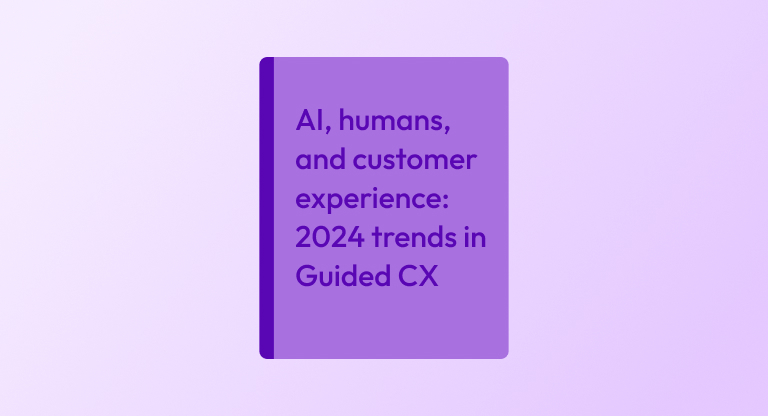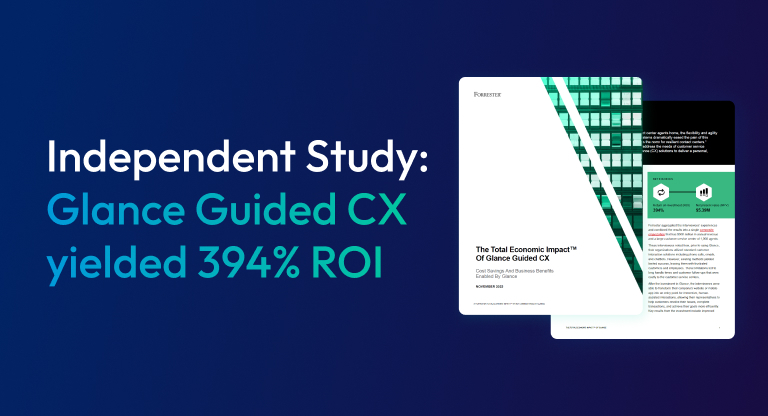Lately, we’ve been talking a lot about some of the best strategies for approaching customer onboarding in the modern era.
But how do you measure how successful these – or any other – onboarding tactics are?
Well, there’s no short answer. Because customer onboarding has evolved.
Gone are the days of strictly periodic, front-loaded training. The best onboarding now caters to the individual needs and preferences of users: whether that’s classroom training, remotely guided training, or self-onboarding.
And this is all because user expectations around software have changed. They want intuitive experiences and short paths to understanding – even if they only log on occasionally and even if their software is constantly updating and changing.
So onboarding now needs to happen continuously. Having training mapped to the “typical customer journey” isn’t enough – you’ve got to help your users whenever and wherever they need it. Tracking the success of your onboarding gets a little tricky – but it starts with measuring across multiple stages.
Come along as we explain what each of those stages is and how you can effectively track your onboarding process throughout.
Stage 1: Starting out
First things first (and this hasn’t changed), you need to track the initial onboarding/training process – whether it’s led by an instructor (in-person or remote) or self-paced. How well is your initial onboarding really performing?
Evaluations built into structured training can help you determine your training efficacy, like exercises that test user aptitude/skill level at key points throughout a course and certifications that confirm the trainee has completed the program.
The performance of training programs can also be measured according to what happens to the users after completion:
● Do the same users need to be retrained?
● What’s the drop-out rate of trainees?
● Are they confident using what they’ve learned? Or do they feel like their knowledge is inadequate?
The training of trainers also needs to be assessed. The same questions apply:
● What’s your trainer turnover like?
● Do they require retraining?
● How satisfied are they?
All of these questions should be asked in order to assess how effectively you’re onboarding people to your product. But these questions alone won’t suffice – because the most important determinant of onboarding success is product adoption and the subsequent, continuous benefits to your organization.
Stage 2: Ramping up
If your initial onboarding process has gone well, it won’t be long before trainees are using your product and getting value out of it. This stage is where you want to be tracking the big two: adoption and usage.
Ideally, you should already have your completion rate (how many users have completed your initial onboarding process). Next thing to keep on your radar is your Time to Productivity metrics (how quickly users are ramping up the use of your product in their day-to-day) and Time to Value metrics (how quickly they’re getting the value they’re supposed to be getting out of it).
And even though there are certainly products that only require a single onboarding session, this is rarely the norm. So you shouldn’t stop tracking once your users are up-and-running! Onboarding, in a world of fast-evolving products, is a continuous process – especially when you’re sending out new features on a regular basis that your users need to be trained on.
Here are some ideas for metrics to track on an ongoing basis:
● Engagement rate: Are users logging in – and how regularly? Remember that all users are different, and a power user that becomes irregular in using your product is potentially a more worrying sign than an occasional user doing the same.
● Churn rate: Over time, how many users are dropping out entirely? Are they being replaced with new users from the same company (which means having to retrain)?
● Feature adoption rate: Are users adopting the relevant features in your product at a reasonable rate according to their role?
● Feature use frequency: Which features are users using the most – and least? This will help determine how much emphasis you put on these features in initial and continuous onboarding – and it can inform product teams as to the value and priority of feature sets.
Stage 3: Continuous use
Ultimately, what determines the success of your onboarding (and indeed, of your product) is the success of your customer.
Customer success metrics will differ according to what your product does and who your customer is, but some typical metrics to track include:
● CSAT: Customer Satisfaction measures how satisfied your customers are with your product, software or service. It’s usually collected via survey at key points in the user journey.
● NPS: Net Promoter Score measures how loyal customers feel and can help predict your company’s growth. It’s often evaluated via a survey process.
● CLV: Customer Lifetime Value determines the value a customer brings to your company across their entire relationship. It is commonly calculated via a formula: “Customer revenue per year * duration of the relationship in years – total costs of acquiring and serving the customer = CLV”
Of course, the flipside of these metrics, like churn rate, can be instructive too.
And don’t forget feedback! Metrics don’t capture everything – so be sure to solicit frequent feedback from users, paying close attention to both their compliments and complaints.
Also: support conversations can be excellent troves of valuable feedback. The issues and questions brought up to your support agents via chats, calls, or tickets can be a primary way of gathering input that can inform your onboarding process.
Seeing what kind of self-service resources (like Help documents and videos) are used most can also clue you in on where your users are having the toughest times. Keep an eye on what users are having to frequently (and infrequently!) ask about and be trained in.
Tracking users, as you can see, isn’t only useful for improving onboarding; it’s also a way to track and improve your product. For example, by tracking if new features are being adopted quickly (and can therefore be learned easily), if they’re adding value to the team that uses them, and – ultimately – if they’re advancing metrics for the business, you can – to an extent – determine the value of these features for all businesses.
And if those new features aren’t being used, you can send customer success and product management teams in to investigate why – and either improve onboarding efforts (if they’re wanted but not understood) or focus product development efforts elsewhere (if users didn’t want or need them in the first place).
If you have a great product, that product will do what you know it can do – when its user base has been shown how to use it well. And that’s how it delivers maximum value to your customers.
Improving customer onboarding at every stage
In the modern era, users want (and expect) things their way. When they raise their hand to be onboarded, give feedback, upskill, or ask for support, you need to be there for them. And it’s worth your while to be there, as well. That means giving customers the ability to easily connect with your product experts, on a moment’s notice, to get the help they need.
Not only that, your trainers and product experts need tools that make it easy for them to show users how to use certain features – and fast, given that there usually isn’t much time to spare for onboarding, particularly in a busy B2B organization.
That’s where Glance’s Guided Onboarding comes in. It’s an experience-altering way to interface (face-to-face!) with your customers and give them the kind of guidance that makes a real impact.
See what we mean here: Guided customer onboarding





